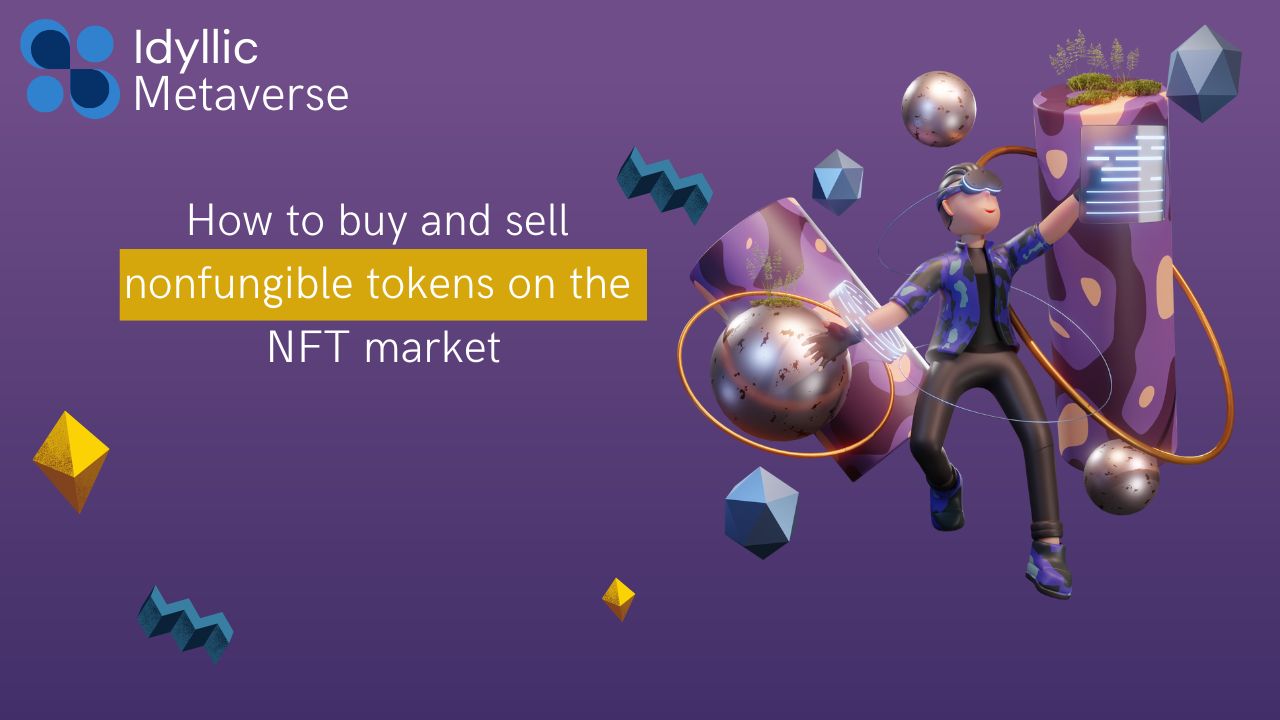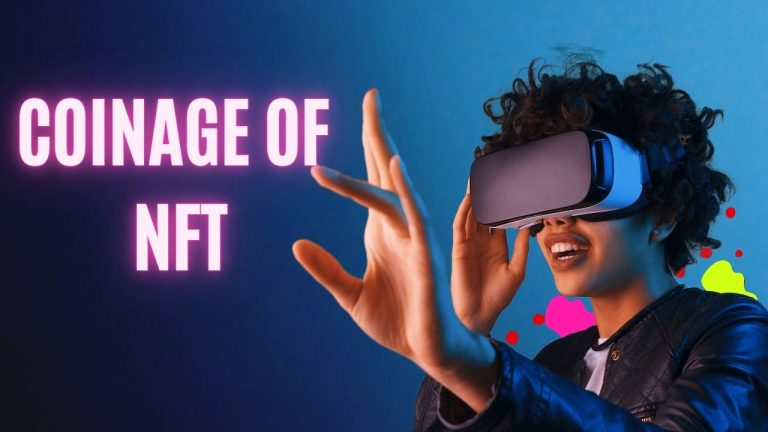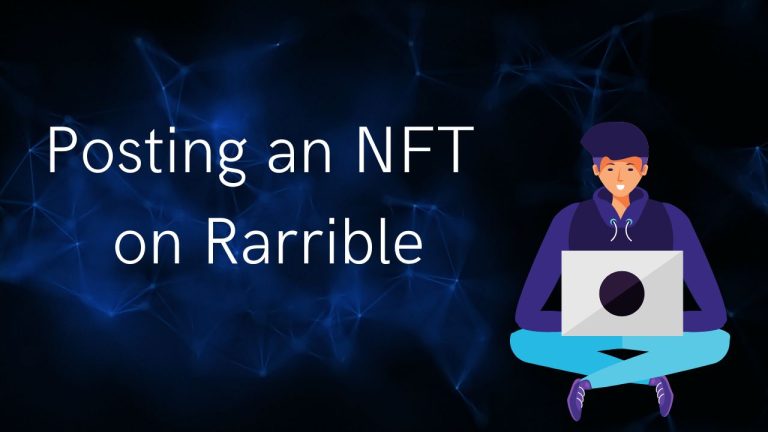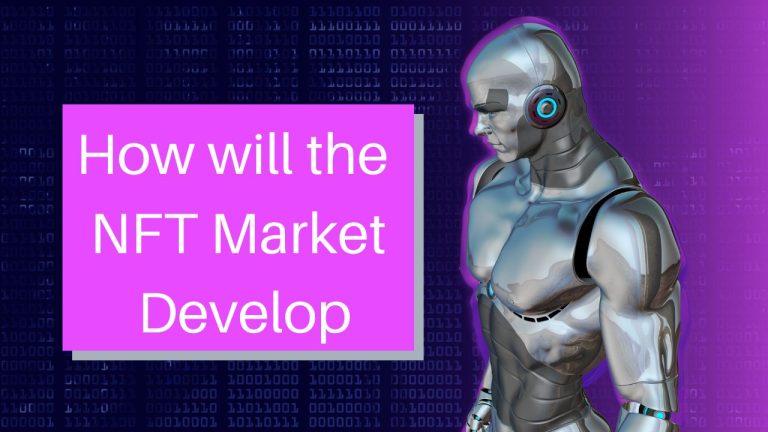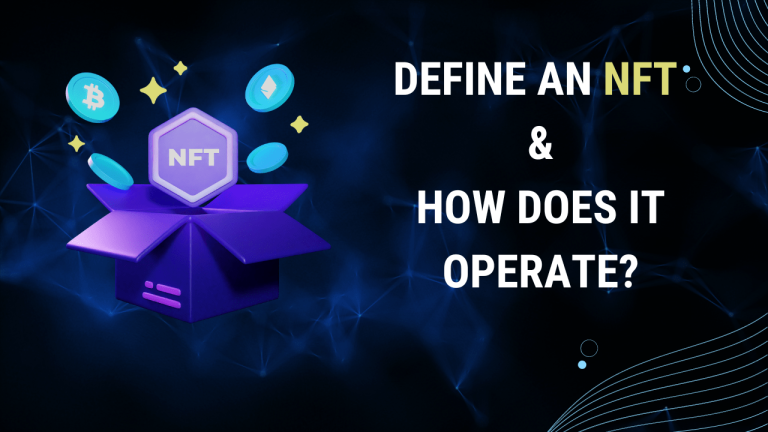How to buy and sell nonfungible tokens on the NFT market
NFTs, or nonfungible tokens, are a development in the cryptocurrency industry and a step toward modernizing banking and other sectors.
Because there is no differentiation between one dollar and another, money is fungible. Commodities of the same quality and stocks of the same kind in the same company are frequently interchangeable. NFTs, on the other hand, represent distinctive physical and digital assets like a work of art, a song, or an in-game collectible that other investors cannot replicate since they are nonfungible. Nonfungible tokens (NFTs) cannot be exchanged for or equal to one another because they are all stored on the blockchain, have unique identifiers, and have metadata.
NFTs can cut out middlemen and connect content producers with audiences directly by enabling digital representations of particular products mixed with the advantages of smart contracts and providing blockchain-generated certifications of authenticity for digital assets. Thus, the idea of NFTs has the potential to significantly alter the present crypto and art ecosystem.
Describe NFTs.
Nonfungible tokens are “unique” cryptographic digital assets that represent both physical and digital goods, such as works of art, music, virtual real estate, in-game collectibles, films, photos, and other original works of creativity. They don’t have a physical form of their own, but in the digital realm, they can be purchased and sold like any other item of property. NFTs are rare, one-of-a-kind, and expensive because of their rarity. They are impossible to replicate and are simple to authenticate. NFTs can be viewed as ownership certification and confirmation of validity for digital or physical assets that are recorded on the blockchain.
Popular NFT use cases include tokenizing real-world things, domain name ownership, licenses and certifications, patents, paperwork, and collectibles in the gaming, music, fashion, sports, and academic industries, among others. NFTs may also be used to track metadata, enhance event tickets, and possibly change the real estate industry.
Although NFT prototypes were experimental assets known as colored coins that were launched on the Bitcoin network in 2012, NFTs have only lately begun to acquire traction in the cryptocurrency industry. NFTs have been around since the early 2010s. NFTs are therefore evolving into a more innovative means of purchasing and selling digital goods. Since galleries, auction houses, and major record labels serve as the creative industries’ middlemen, NFTs give artists and other content creators the chance to monetize their work and sell it directly to the public through NFTs.
How can I purchase NFTs?
Some could argue that spending thousands or millions of dollars on portable network graphics (PNG) or graphics interchange format (GIF) files is unreasonable. People are still willing to pay exorbitant prices for items that are readily available online for free to view, screenshot, and download. why?
When establishing a social network among individuals and proving a sense of community, NFTs have a direct relationship to social and financial capital. Built-in authentication is present in the information that is immutably recorded on the blockchain. It effectively enables content producers to digitally “sign” their NFTs, allowing viewers to interact with artists, acquire their favorite works of art, and become a part of the niche community.
Buying NFTs, also known as “Investment-as-a-Status,” is seen to be one of the most effective ways to increase social capital by creating additional relationships and links within the crypto community.
Even if a photo or piece of music has been shared online hundreds of times, collectors always look for something rare and one-of-a-kind when they purchase an NFT.
It is important to note that collectors do not purchase original content because they are unlikely to be the owners of the copyright. The content creator keeps the copyright thanks to technology, and the majority of NFT platforms give them the chance to make royalty claims later on when the item is sold again. Instead, the most important item that collectors get when they acquire NFTs is a token that links their name to the work of the content creator on the blockchain.
Therefore, purchasing NFTs enables collectors to possess authentic objects that are documented on the blockchain and serve as ownership proof. The sections below outline a step-by-step procedure for purchasing NFTs.
Selecting a cryptocurrency wallet and cryptocurrencies to finance a wallet
Collectors must register for an account on the marketplace after selecting a preferred collection and an NFT marketplace. They won’t be able to purchase or sell anything, though, until they first connect their bitcoin wallet to the selected NFT platform.
Any blockchain system must have a crypto wallet as a place to safely store digital assets. According to blockchain fundamentals, crypto community members require wallets to access various platforms, use blockchain services, sign transactions, and manage their balances. Thus, all cryptocurrency platforms and NFT marketplaces in particular may operate more precisely and securely by doing away with the requirement to retain user account data.
A wallet must be compatible with the cryptocurrency being used on the platform the buyer wishes to use before being set up. Since the majority of NFT services are built on Ethereum, they recognize Ether (ETH) as a valid form of payment.
Different forms of cryptocurrency wallets
These are three different forms of cryptocurrency wallets.
- Hosted wallet
- Non-custodial wallet
- Hardware wallet
Hosted wallet
The most user-friendly and simple to set up a wallet is a hosted wallet, commonly referred to as a custodial wallet. Because a third party automatically stores users’ cryptocurrency there, much like banks do with the funds in checking and savings accounts, it is known as a hosted service. Users need not worry about this type of wallet since they will never lose their cryptocurrency even if they lose or forget their password or private key because third parties are in charge of ensuring the security of users’ cryptocurrency.
The largest drawback of utilizing a custodial wallet is not just a lack of autonomy but also a loss of anonymity since this sort of wallet frequently advises users to carry out Know Your Customer (KYC) verification, which stands for ID verification. Users must also confirm that the hosting provider is reliable and knowledgeable.
Non-custodial wallet
A non-custodial wallet does not entrust the security of its users’ cryptocurrencies to a third party. They are instead given total control over the security of their cryptocurrency funds. Users are free to select the type of transaction cost, either the default one or a larger fee depending on how quickly they want a transaction to occur, so they do not have to make a request each time they wish to transmit cryptocurrency.
Although these wallets offer the necessary software to hold cryptocurrencies, it is the users’ responsibility to remember and safeguard passwords. Users won’t be able to access their wallets if they misplace or forget their passphrases, also referred to as mnemonic and seed phrases.
A list of 12 to 24 words selected at random is referred to as a “seed phrase” (arranged in a specific order). It is produced by bitcoin wallet software, and users utilize it to reclaim access to and control over their on-chain cryptocurrency holdings. To ensure its safety, it is advised to keep a copy of the seed phrase offline.
For instance, put it in writing and save it safely. Keeping the seed phrase on an internet-connected device or leaving it in any digital format, such as a print file or a photo, is not advised. A bad actor will have complete access to the wallet’s cryptocurrency assets if he learns the user’s seed phrase.
Users can access complex Bitcoin operations like staking, lending, borrowing, and more using non-custodial wallets as well.
Hardware wallet
A tangible object the size of a USB flash drive is referred to as a hardware wallet, sometimes known as a cold wallet. The use of this kind of wallet is both rather complicated and pricey. The secure storing of users’ private keys without the security issues of internet wallets mentioned above is the apparent advantage of utilizing a hardware wallet. Even if the user’s computer is compromised, a hardware wallet can safeguard and preserve crypto money offline.
The best wallet depends on the collectors’ preferences and, to some extent, on the level of security they are willing to accept. The decision is entirely up to the collectors; they can keep the purchasing process simple with a hosted wallet, maintain full control over their cryptocurrency with a non-custodial wallet, or exercise further caution with a hardware wallet.
In conclusion, collectors can connect their wallets to a good NFT marketplace, make an account, and begin purchasing NFTs as soon as they have set up their wallets and have adequate cryptocurrency cash.
Choices for purchasing NFTs
A few ways exist for purchasing nonfungible tokens, and most of them mimic eBay schemes. Therefore, it shouldn’t be difficult for a casual collector to understand how to purchase NFTs.
An auction is the most typical choice. The majority of NFT markets operate like auction houses. The two sorts of auctions they often offer are. The first one is an English auction in which the winning bid is determined after the sale. The bidder who has submitted the highest bid at the end of the timed auction period wins and purchases an NFT. A timed auction is a type of English auction in which each item can be bid on over a predetermined time.
Dutch auctions are a different kind of descending-price auction. The ceiling price is the starting point for an NFT’s pricing, which is then periodically reduced by a predetermined amount (e.g., 0.1 BTC every 10 minutes). The NFT Dutch auction ends when a user places a bid at the going rate.
Through NFT drops, nonfungible tokens can also be acquired. Collectors must wait for one of the drops to be announced to try and get one of the rare NFTs before they are all gone. These drops can be bought and traded in a matter of seconds, however, most collectors must first register on the specific NFT platform and fund their cryptocurrency wallets to participate in the drop.
There are also “set price” or “purchase now” options on some NFT platforms. It refers to a sale at a set price that NFT developers decide upon to immediately sell their nonfungible tokens. Since fixed-priced purchases do not need buyers to rely on auctions or wait for a specific drop time, they may be thought of as the simplest option for collectors.
However, as prices are frequently displayed in cryptocurrency decimals (for example, ETH) and may not be accompanied by the fiat value (for example, USD), collectors must pay close attention to the price’s currency and format. Additionally, buyers should be aware that this dollar value is subject to frequent changes owing to the unpredictability of the cryptocurrency market.
Additionally, as collectors will probably have to pay the transaction cost, commonly known as a gas fee when buying, the quantity of cryptocurrency in the wallet must be greater than the price of the NFT they wish to acquire. Gas fees are payments that must be made for blockchain transactions to successfully process and be validated. Users force them to make up for the computer power required.
What stores sell NFTs
In the cryptocurrency industry, there are numerous different online markets where nonfungible tokens can be bought and sold. Not all of them operate in the same way, offer the same functionality, or have access to the same kinds of NFTs. The Ethereum blockchain, however, serves as the foundation for the bulk of platforms. Blockchains like Cosmos, Polkadot, or Binance Smart Chain, to mention a few, are home to additional non-Ethereum NFT businesses.
Other distinctions between NFT marketplaces include things like whether they accept necessary NFT standards and file formats, accessibility of the NFT platform, the cost to create (or mint) an NFT, and other things that might matter more to content providers than to purchasers.
Although each NFT marketplace operates differently, the majority of them provide a wide selection of NFTs for purchase. Veteran purchasers select a marketplace based on the specific sort of nonfungible token they wish to acquire at the same time.
How to market the NFTs you produce.
Selling minted NFTs, which is the method used by content producers, and selling an NFT that a collector has already acquired and is ready to trade are the two main methods for selling NFTs.
The nonfungible token creation (or minting) process will most likely come to a finish using the first method. Minting is a quick process that puts content that represents creative products like pieces of art, collectibles, melodies, memes, etc. into an NFT and makes it “tokenized,” making it tamper-proof and secure. These digital goods can now be bought, sold, swapped, and monitored digitally when they are sold again.
Content producers just require a Mac or PC, an account on a blockchain-focused NFT marketplace, and a cryptocurrency wallet that accepts NFTs with some cryptocurrency in it to start minting.
Make a final check before pressing the “Create” button, as is customary. When the creators sign their NFTs and pay the gas fees, the minting process is finished. The transaction is then regarded as having been validated, and content producers can now view their freshly created NFT on their profiles on the preferred NFT platform.
Additionally, while selling NFTs, NFT markets could require content producers to establish a royalty rate. Through royalties, they can get a set commission each time the NFT is sold to a new collector. Due to the fundamentals of the nonfungible tokens’ technology, royalties may automatically create lifelong passive income streams for content creators.
The majority of NFT marketplaces additionally offer the possibility to establish a price for the NFT while minting a token or selecting a selling mechanism. As a result, newly created NFTs are frequently thought of as being offered for sale immediately after they are made.
In other instances, content producers must access their accounts on the NFT markets and find digital products from their NFT collections to sell NFTs. They must click on the required NFT items as soon as they are located. A “sell” or “list for sale” button will become visible after this activity. Once they have this choice, the makers can select it and specify the selling strategy, such as an auction or a set “buy it now” price.
If they are fortunate enough, they may have the chance to build a drop for their nonfungible tokens with the assistance of the NFT platform representatives, which will probably bring some amount of visibility and probably help them successfully sell their products.
How to sell purchased NFTs
Selling accumulated nonfungible tokens isn’t any more difficult than selling NFTs that have just been created.
Collectors can easily resell their NFTs on the secondary market if they have the least inclination. The first sale of an NFT is referred to as the “primary market,” while any subsequent resales of the work are referred to as the “secondary market.” Collectors need a few items to sell NFTs, most of which they likely already possess: an account on their preferred NFT marketplace, a crypto wallet linked to it, and a certain amount of cryptocurrency to be utilized on that marketplace.
The primary distinction is that when NFTs from collectors’ temporary collections are sold, they will not be eligible for royalties. The wallets or the original designers of the NFTs will receive royalties in the form of a share of all upcoming sales.
Therefore, whereas collectors only temporarily get nonfungible tokens for their collections, content creators are regarded as being perpetually associated with copyright on their creative works in the form of NFTs. Like collectors in other traditional markets, owners of nonfungible tokens have only the most basic ownership rights, such as the ability to retain, sell, or gift the objects they have acquired. These rights expire with the sale of the specific NFT.
Collectors must choose the NFTs they wish to sell by visiting their profiles on the NFT sites. They must locate the “sell” or “list for sale” button after selecting the saleable NFT. They can choose the terms of the sale by clicking this button, which will take them to a pricing page. They will next need to decide whether to launch an auction or set a price for the NFTs. If a collector wants to start an auction, they should find out the kind of auctions the chosen NFT platform supports. Most frequently, it could be a Dutch auction, a timed auction, or an English auction.
Despite the volatility, lack of development, and high amount of uncertainty surrounding nonfungible token prices, the rebirth of NFTs is still spreading. Even if content producers and collectors occasionally lose money when selling NFTs, purchasing nonfungible tokens is still regarded as a fantastic way to assist the artists, musicians, designers, and other creative people in whom collectors of such digital assets are interested.
FAQS:
What do NFT gas fees entail?
Blockchain network validators receive a gas fee for their services to the blockchain as part of each transaction. Without the fees, no one would be motivated to stake their ETH and support network security.
What NFT platforms are there?
Matthew Le Merle established the Estonia-based startup Brokoli Network in 2021. Axelar is a platform for global interoperability that links blockchains using a decentralized network, an SDK of protocols, and APIs. On the Solana blockchain, there is a decentralized social network called Social.

